Microsoft has announced that Microsoft Azure ExpressRoute Metro, a new private connectivity architecture designed to improve network resiliency, is now generally available. It offers a highly durable circuit that allows separate connections to two individual edge sites within a city, confirming expanded redundancy and consistency.
ExpressRoute Metro is a high-resiliency configuration that confirms multi-site redundancy. It offers the advantage of a dual-homed structure, enabling diverse connections to two separate ExpressRoute peering locations within a city.
The high-resiliency configuration significantly enhances availability and resilience for connectivity from on-premises to Azure resources by leveraging redundancy across the peering locations. Two connections can be established within the peering location: ExpressRoute Circuit and ExpressRoute Direct.
Today, I’m exploring the ExpressRoute Metro, a new private connectivity setup designed to enhance network resilience.
Table of Contents
What is ExpressRoute Direct?
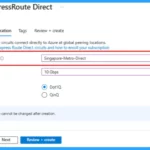
ExpressRoute Direct enables customers to connect directly to Microsoft’s global network. It allows well-distributed peering locations worldwide. It offers dual 100 Gbps or 10-Gbps connectivity, supporting Active/Active connectivity at scale.
Microsof Azure ExpressRoute Metro
The standard ExpressRoute configuration includes a pair of links to improve connection reliability. This setup provides backup and enhances connection availability during hardware failures, maintenance, or unforeseen incidents at the peering locations. These backup connections may not be able to handle certain disruptions, potentially leading to a complete loss of connectivity from your on-premises networks to your cloud services.
The diagram below compares the standard ExpressRoute and ExpressRoute Metro circuits.
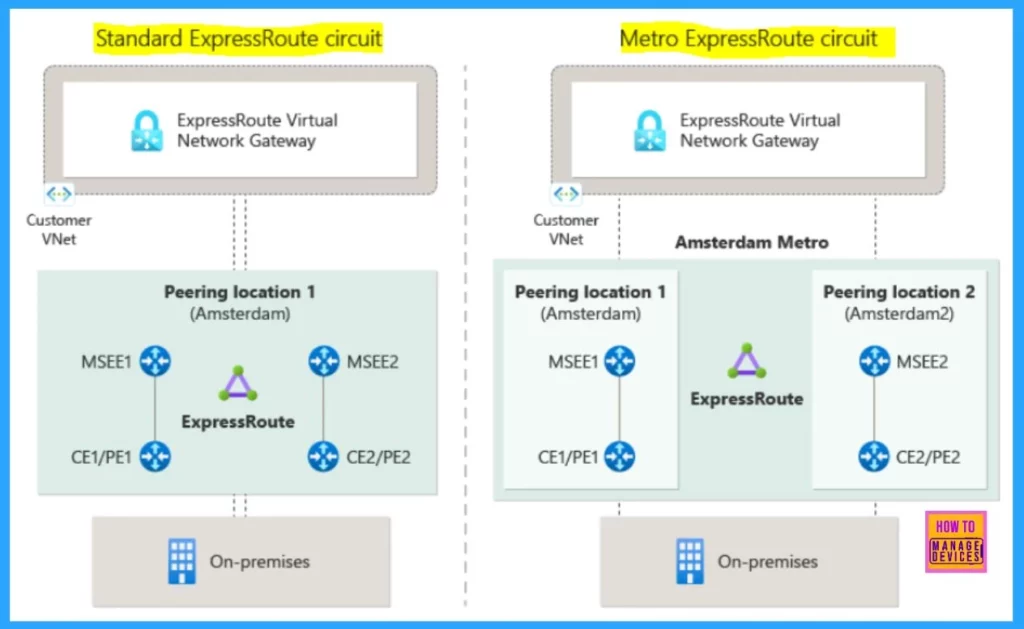
Using Metro Provider and Metro Direct, customers have improved redundancy across the circuit and port infrastructure and an extra layer of resilience at the edge site level. This solution maintains forceful connectivity during site-wide disruptions, guaranteeing uninterrupted service and business continuity.
- Desktop Support Network Troubleshooting Tips for Beginners
- Free Entra Training Videos | Start Learning Entra ID Azure AD
- Top 83 Windows 11 Desktop Admin Interview Questions
Key Features of Microsoft Azure ExpressRoute Metro
The following table shows you the key features of ExpressRoute Metro.
| Features | Description |
|---|---|
| Enhanced Resiliency | Dual-homed connections across two individual edge sites give better resiliency. |
| Locations Coverage | Metro is currently available in Amsterdam, Singapore, and Zurich. In the coming months, more locations, including Atlanta, Milan, Madrid, Chicago, and Dublin, are scheduled to go live. |
| Simple Setup | The setup process is easy to configure, with a guided portal providing clear navigational support. |
ExpressRoute Metro Locations
ExpressRoute locations are where Microsoft’s devices are located to connect to its network globally. Connecting to at least one location in a region gives access to Microsoft’s services in all areas. The naming convention for Metro sites will utilize City and City2 to denote the two unique peering locations within the same metropolitan region.
| Metro location | Peering locations | Location address | Zone | Local Azure Region | ER Direct | Service Provider |
|---|---|---|---|---|---|---|
| Amsterdam Metro | Amsterdam Amsterdam2 | Equinix AM5 Digital Realty AMS8 | 1 | West Europe | ✓ | Colt Console Connect Digital Realty Equinix euNetworks Megaport |
| Singapore Metro | Singapore Singapore2 | Equinix SG1 Global Switch Tai Seng | 2 | Southeast Asia | ✓ | Console Connect Equinix Megaport |
| Zurich Metro | Zurich Zurich2 | Digital Realty ZUR2 Equinix ZH5 | 1 | Switzerland North | ✓ | Colt Digital Realty |
Configure ExpressRoute Metro
ExpressRoute connections don’t use the public Internet. They offer better security, reliability, and speed, with lower and more consistent capacities than regular Internet connections. Sometimes, using ExpressRoute connections to move data between on-premises devices and Azure can save you a lot of money. Let’s check the configuration of ExpressRoute Metro.
Create an ExpressRoute Metro Circuit:
You can choose from three metropolitan areas to establish an ExpressRoute Metro circuit in the Azure portal. Once in the portal, you can specify a Metro peering location and select the supported service provider for that location.
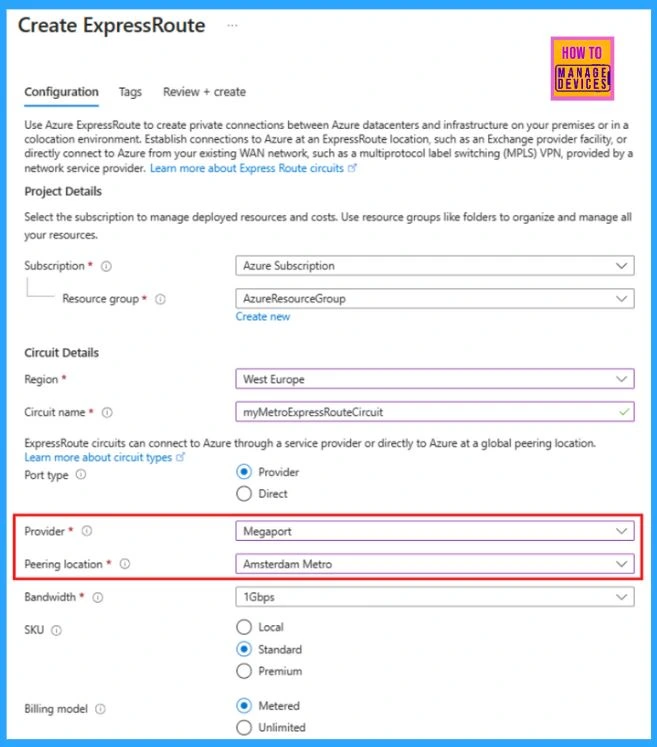
Create a Metro ExpressRoute Direct
To create a Metro ExpressRoute Direct port, specify one of the Metro peering locations within the Azure portal.
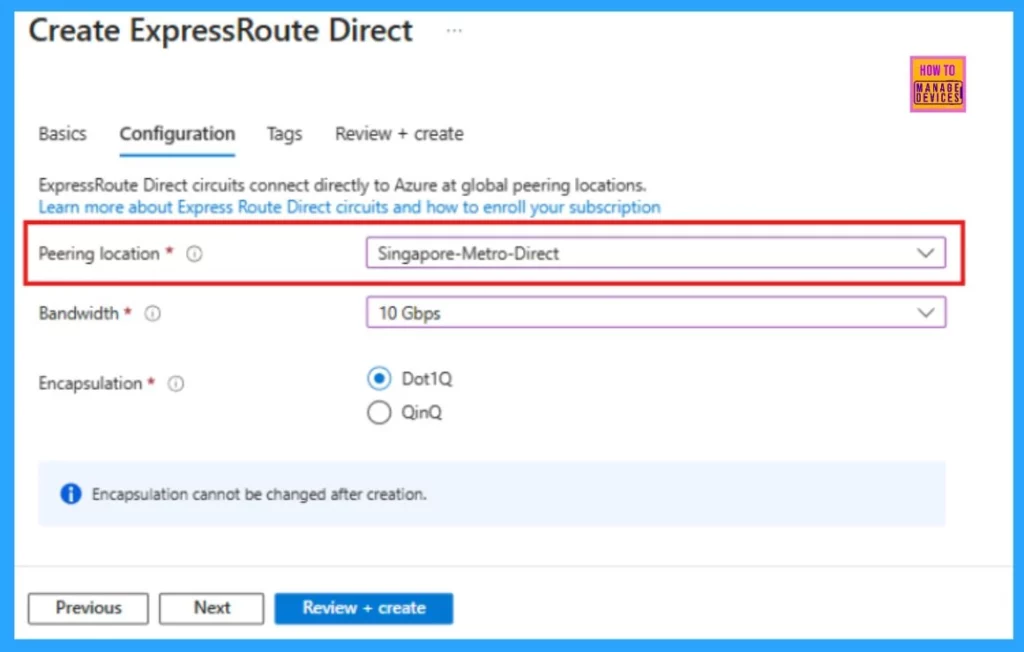
After setting up the Metro ExpressRoute Direct ports, you can take the LOA (Letter of Authorization), get the Meet-Me-Room details, and set up additional physical cross-connects.
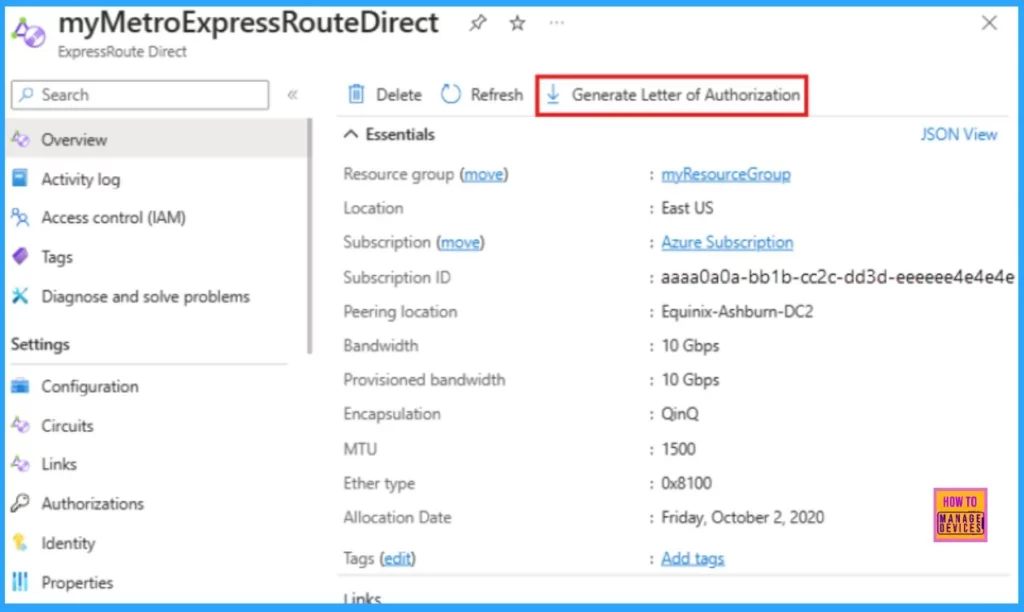
Switch from an Existing Expressroute Circuit to a Metro Circuit
First, to switch from an existing ExpressRoute circuit, create a new ExpressRoute Metro circuit. Then, follow the circuit movement steps from the standard ExpressRoute circuit to the ExpressRoute Metro circuit.
The diagram given shows the migration process from an existing ExpressRoute circuit, mentioned as Circuit A, to a new ExpressRoute circuit, represented as Circuit B. Circuit B can be in the same or a different peering location as Circuit A. The migration process involves the following steps:
- Deploy Circuit B in isolation: Deploy new Circuit B without impacting Circuit A’s traffic or the production environment.
- Block the production traffic flow over Circuit B: Prevent traffic from using Circuit B until it’s thoroughly tested and validated.
- Complete and validate end-to-end connectivity of Circuit B: Ensure that Circuit B can start and maintain a constant and secure connection with all the necessary endpoints.
- Switch over the traffic: Redirect the traffic flow from Circuit A to Circuit B and block the traffic flow over Circuit A.
- Decommission Circuit A: Eliminate Circuit A from the network and release its resources.
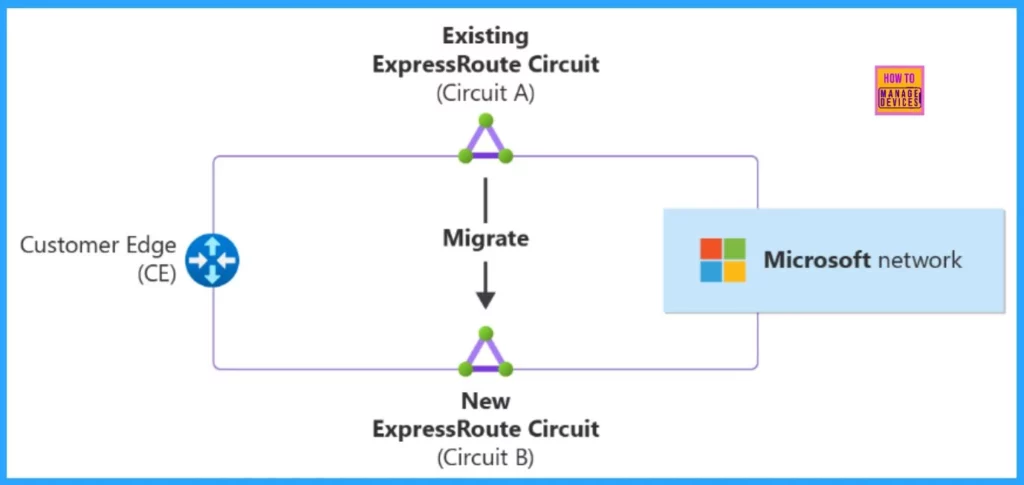
Join the LinkedIn Page and Telegram group to get the latest step-by-step guides and news updates. Join our Meetup Page to participate in User group meetings. Also, Join the WhatsApp Community to get the latest news on Microsoft Technologies. We are there on Reddit as well.
Author
Anoop C Nair has been Microsoft MVP for 10 consecutive years from 2015 onwards. He is a Workplace Solution Architect with more than 22+ years of experience in Workplace technologies. He is a Blogger, Speaker, and Local User Group Community leader. His primary focus is on Device Management technologies like SCCM and Intune. He writes about technologies like Intune, SCCM, Windows, Cloud PC, Windows, Entra, Microsoft Security, Career, etc.
